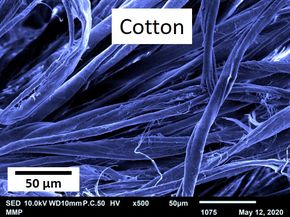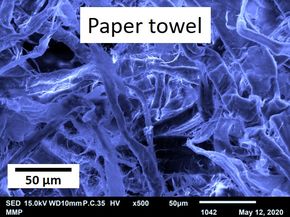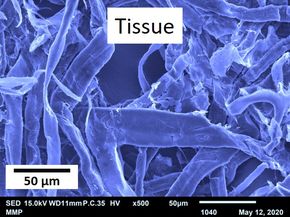What's the story with face masks?
We asked TU/e professors Kitty Nijmeijer and Bert Blocken what they think of this hotly debated issue.
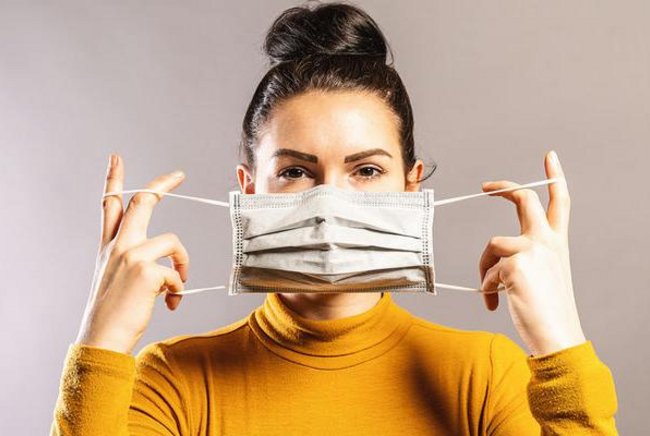
It has taken a while, in comparison with neighboring countries, but in the weeks and months to come, it is likely that face masks will feature prominently here too, on Dutch streets and public transport. Debate about the rhyme and reason (or lack of it) of facial protection in the battle against the new coronavirus is often heated. What do TU/e professors Kitty Nijmeijer (membrane expert) and Bert Blocken (aerodynamics expert) think?
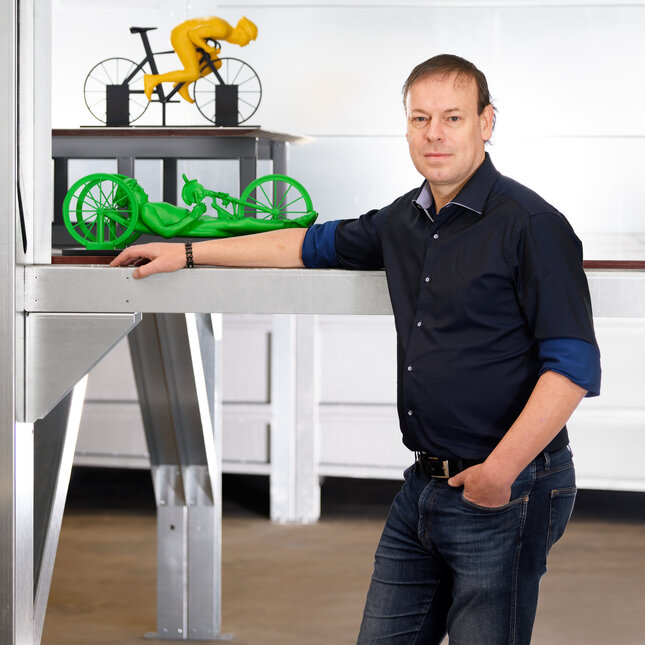
Bert Blocken, professor at the Department of the Built Environment and an expert in the field of aerodynamics is keen to start by emphasizing the difference between medical FFP2 masks, which protect the wearer against external virus particles, and the face masks being recommended for use on public transport, by hairdressers, or, as in neighboring countries, elsewhere in public. “The main purpose of this second type of mask is to prevent the wearer from infecting others via droplets emitted during sneezing, coughing, or even talking.” As this type is permeable to smaller droplets that drift through the air, known as aerosols, it does not offer the wearer any significant protection.
The requirements for such simpler face masks are, according to Blocken, less strict than for medical masks. “Studies done since the outbreak of SARS in 2002 show that even a simple scarf succeeds in stopping some of the larger droplets. A scarf is not, of course, the most efficient piece of protective equipment, and non-medical masks never stop a hundred percent of the aerosols, but even a scarf can help limit the spread of the virus.” This, he believes, is the reason it has long been advised, or even mandatory, in neighboring countries that people wear a facial covering in many places. “In Asia it is a sign of politeness to wear a mask if you are sick.”
The effectiveness of the simple face masks, it should be said, stands or falls by their correct use, Blocken emphasizes. “If you put it on incorrectly, or touch it with your hands, it won't work or will even have an adverse effect. So I certainly understand the criticism that face masks could give a false sense of security.”
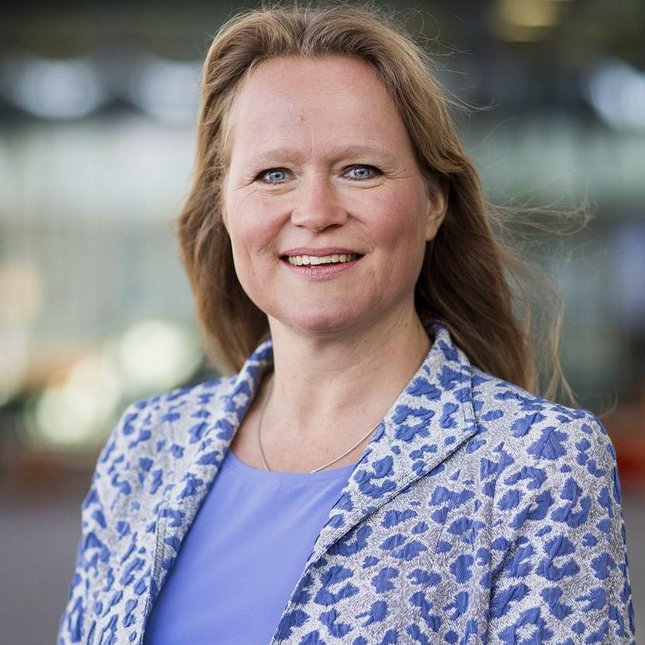
Filters
Kitty Nijmeijer sees little benefit in the use of non-medical face masks, precisely for this reason. She heads up the Membrane Materials and Processes group at TU/e, where she does research on the various ways synthetic membranes can be used, for example to extract valuable materials from waste streams. Think of these membranes as sophisticated filters. And face masks are also filters, she points out.
Coronavirus is about a tenth of a micrometer in diameter. “If you want to stop it with a simple filter, you are going to need such small pores that you won't be able to breathe. Medical face masks contain an electrostatic layer to which the virus particles adhere, which gives scope for using larger pores. Even so, it's no picnic wearing them.”
Simple face masks, if worn at all, must be replaced every few hours and washed before reuse - at 60 degrees at least - but elsewhere, Belgium for example, a boil wash is recommended, Nijmeijer knows. “Otherwise face masks themselves become a source of viruses. Non-medical masks may stop larger droplets but in so doing they obviously become wet, and the virus thrives in a moist environment. Out on the street, I see how carelessly people handle face masks. You mustn't touch them, or take them off briefly to drink. That's all it takes to mess up.”
Social Distancing
In view of this, Nijmeijer herself is determined to stick with the two-meter distance rule. “A little more than one meter fifty in order to build in a safety margin. I don't want my health to depend on whether others are wearing a good, clean face mask. Consistently keeping your distance, that alone will considerably reduce the spread of the virus, probably by as much as 80 percent. It's no bad thing that face masks - in theory - add a couple of percent to that, but my worry is that wearing them is chiefly going to give us an excuse for getting closer to one another. And that will cause a corresponding increase in the chance of infection. On the other hand, in public spaces face masks can also send the message that something is amiss, and that in itself may make some people more cautious. Face masks are no alternative to keeping a distance of one meter fifty. It's a mistake to think otherwise.”
To lend weight to her arguments, in her own lab the membrane expert had pieces of cotton, vacuum cleaner bag, paper towel and tissue placed under the electron microscope. As can be seen in the images above, the pores in these materials, even in the vacuum cleaner bag, are ten to a hundred times bigger than the virus particles. “All these materials consist of overlapping filaments or fine fibers. To get a denser material, you stack multiple layers, but pores ranging from a few micrometers to as much as fifty micrometers remain visible. Moisture droplets containing the virus are bigger than this, but they do settle on the mask. When you breath, the air in the mask becomes moist. This enables the virus to penetrate the mask and reach your mouth.” Which, as said above, confirms that a non-medical mask offers the wearer little protection.
Capture droplets
Nonetheless, face masks are certainly of some value, stresses Blocken. They capture the droplets exhaled by the wearer so the chance of infecting another person is reduced. “Unquestionably, it is better if the pores are smaller than the virus particles themselves, but even if that is not the case, the mask is not useless. If you stop the droplet, then you stop the virus particles it contains. The key thing, therefore, is the size of the droplets and the aerosols.”
Research studies undertaken during the past twenty years paint a nuanced picture, he says. But the fact that policymakers are keen to communicate clear messages, he feels, has led to the effectiveness of face masks being either exaggerated or downplayed, as was the case in the Netherlands until now. “As yet, we don't even know for sure whether the new coronavirus can spread through the air, but if it can you naturally want to err on the side of caution.” The ‘safe’ distance of one meter fifty, incidentally, comes from an antique study from 1934, Blocken can't help but remark. “And since then that idea has stuck, but there are more recent studies that indicate that during a heavy bout of sneezing the droplets can travel six meters.”
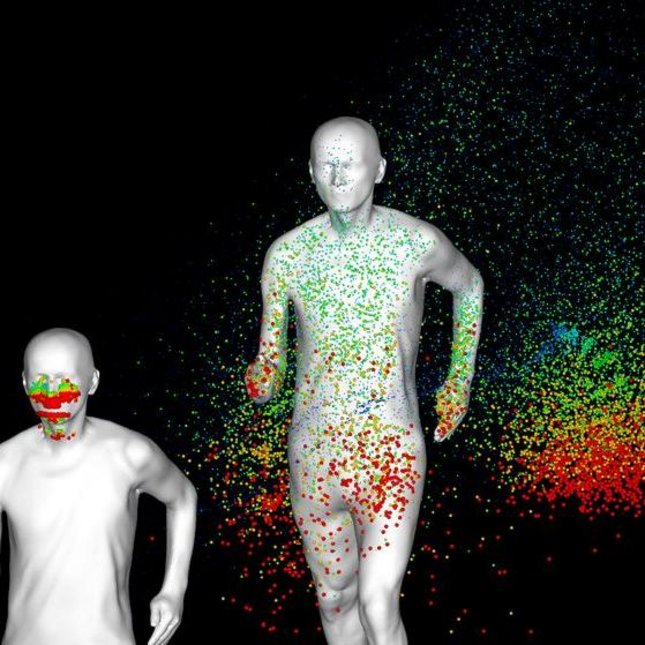
Masks for athletes
Blocken himself was recently in the news with research on the dissemination of droplets by people engaged in walking, running and cycling, in which he stressed that it can make a big difference how the various persons involved are moving relative to one another. Since then, the Belgian professor has started a project in cooperation with a physician at NOC-NSF in which face masks for athletes are being tested. From personal experience as an enthusiastic cyclist, he knows that in principle it is possible to wear a face mask while doing sport.
“While cycling locally, I've already been overtaken on several occasions by cyclists wearing a face mask. And my contact at NOC-NSF has shown himself capable of considerable physical exertion while wearing a special sports mask. What we now want to study is how well masks like these stop droplets.” As the mask soon becomes wet during significant exertion, the rate of evaporation is important. “And unavoidably that is going to require a structure that is slightly open.”
Inevitably, a compromise is going to have to be reached between effectiveness and comfort, says Blocken. “We want to study both how large the pores must be to allow considerable exertion, and how small they must be to reasonably effective in stopping droplets exhaled by the athlete.”
For an overview of all corona-related research at TU/e check TU/e against COVID-19.
